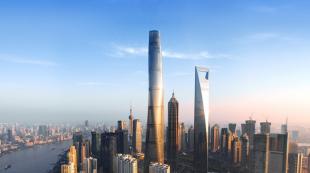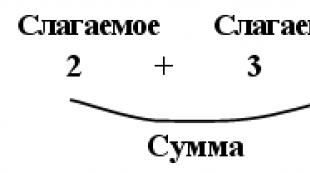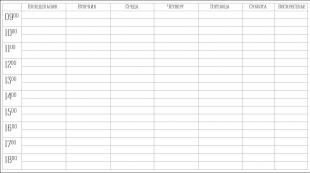Medieval Chinese. Features of the state and legal development of China in the Middle Ages. Development of China in the Middle Ages
The beginning of the Middle Ages in China is considered to be the era of the "Three Kingdoms" (220-265), when the Han empire was divided by the generals into the kingdom of Wei - the north, Shu - the southwest, and Wu - the southeast of the country. During this period, the Chinese ethnos was formed, a new Central Chinese language appeared. "Strong houses" - large landowners receive "guests" - ke, fugitives from the war on the rights of land holders. For about 50 years, the kingdoms are at war with each other, Wei wins. In 265, the Northern Wei commander Sima Yan proclaims himself emperor of the new Jin dynasty (265-419). The long-term unification of the country was prevented by two circumstances: the desolation of the country and the nomadic tribes: the Xianbi and the Zhuzhan. They seized the north of the country and the Yellow River basin from the Chinese, only the southern regions of China remained under the control of Jin. The era of "Northern and Southern Dynasties" (420-581) begins. Northern dynasties are assimilated barbarians who created states on the Chinese model. Their struggle with the south in a short period of time lost its ethnicity and acquired a dynastic character. Northern commander Yang Jian - the founder of the Sui dynasty (581-618) restores the unity of the country. He was succeeded by Yang Guang, who began the construction of the Great Canal between Yellow He and Yangtze and the reconstruction of the Great Wall of China. Tax hikes and heavy labor conscription caused riots and uprisings. The emperor's miscalculation in foreign policy was that he failed to establish peaceful relations with the new nomads of the north - the Turks. The military leader Li Yuan (half-Turk) overthrew the emperor in 618 and founded a new Tang dynasty (618-906).
The Tang era is divided into two periods. The first period: VII - the middle of VIII is characterized by internal progress and external power of the empire. At that time, there was no state equal to the Tang Empire in the world. She controlled the space from the Pacific Ocean to the Aral Sea. Almost the entire Great Silk Road was in her power. Second period: mid-8th - early 10th century marked by gradual political decline and decentralization. The power of the Tang was based on a monopoly on all economic resources of the country, a powerful army and an excellent state apparatus. The country was divided into 10 provinces, provinces - into districts, districts - into counties. The counties consisted of peasant communities - five-courtyards that performed control and fiscal functions. The administration was headed by officials appointed by the emperor and passed the exams. The power of the emperor - the "Son of Heaven" was unlimited. He was assisted by a Council of three chambers and several departments: tax, military, judicial, public works, which selected officials, was in charge of accounting for the land and population, and monitored the observance of rituals. A special place was occupied by an independent inspector's supervision, he could file a complaint against any official convicted of corruption. The Confucian inspectors observed loyalty to the emperor until he sinned against the principles of "good government". Such a system of organizing power existed in China until the beginning of the 20th century. Agriculture was booming on the basis of the allotment system of land tenure, crafts and trade developed, printing appeared, gunpowder began to be used in military affairs, classical poetry prevailed in literature, and the way of life was based on Confucian ethics.
The uprising of the governor of the northeastern province of An Lushan in 755 marked the frontier beyond which the weakening of the empire began. At the same time, she ceded control of the western part of the Great Silk Road to the Arabs. The reforms of First Minister Yang Yan that followed the rebellion allowed the purchase and sale of land and meant recognition of the decline of the allotment system and the victory of private land ownership, which the Chinese peasants did not agree with. The drought of 873 triggered a peasant war led by Haun Chao (881-901). It ended only with the death of the leader, but the Tang Empire also died. 901-960 was marked by the division of the empire between the military leaders and the provincial governors and their enmity among themselves. The army, which fought against the Khitan, the new barbarians, proclaimed its commander Zhao Kuanin emperor. Weakened by civil strife, "strong houses" could not resist this. Song Dynasty begins (960-1279)
In Soviet historical literature (Konrad, Nikiforov), the point of view was expressed that the III-X centuries. were the era of transition from slavery to feudalism. Stabilization of the 10th century meant that the new formation was established. The position of modern science (L. S. Vasiliev) is that this concept distorts the meaning of the historical process in the medieval East and, in particular, in China, and one should refrain from it. From an economic and cultural point of view, the life of society in the Song era was rich and active, state-owned manufactories appeared, and merchant shipping was developing. However, the dynasty controlled only the south of the country. In the north, the Khitani created the Liao state based on the Chinese model, in the northwest the Tanguts united into the Xia state, and in the northeast the Jurchens called their state the Jin empire. The Song government paid them tribute every year in silver and silk. The end of the empire was laid by the Mongol conquest. Destruction in the south was moderate, since Khubilai had already embraced the ideas of state building by Yelu Chutsay. The Mongol Yuan dynasty (1271-1368) united the north and south of the country under its rule and gradually returned the Chinese officials to the apparatus of power. Merchants suffering from inflation and peasants were not loyal to the Mongols. The uprising of the "red bands" of 1351-1356 expelled the Mongols from the country, and its leader, the former shepherd Zhu Yuanzhang, declared himself emperor of the new Ming dynasty (1368-1644). The Ming era was practically unaware of social upheavals. But since the 16th century. the process of concentration of land in private hands and land dispossession of the peasantry took on enormous proportions. This led to the longest and most powerful peasant war of 1628-1644, one of the leaders of which was Li Zicheng. The commander-in-chief of the imperial army did not recognize him as emperor and invited the Manchus to help recapture the rebel-held Beijing. Here the new Manchu Qing dynasty (1644-1912) was proclaimed.
A review of the political history of medieval China shows that the country's political system turned out to be capable of recovery after the most severe disasters. The development of Chinese statehood had a cyclical nature of the replacement of centralism by decentralization and the restoration of control over the country by the new ruling dynasty. This cyclical nature is explained by the peculiarities of the socio-economic organization of Chinese society.
Economic practice in China.
Allotment land use system and its evolution
The dynastic cycles were based on the processes associated with the evolution of the Chinese system of land tenure. This system is called allotment, its approval began in the era of Jin. The state, the supreme owner of land in China, divided the main land mass into allotments. Each man received 100 mu (6 ha) and performed a grain service for this, i.e. gave to the treasury the twentieth, and sometimes most of the harvest, paid tax on domestic products, mainly yarn, worked for several days a year in public works. Women, old people and children also received allotments, but smaller than those of men. In the Tang era, this system finally supplanted individual land tenure. Officials and headmen kept records and redistribution of land. At the age of 70, the peasant gave his allotment to the community, leaving behind him a manor plot, a garden and a vegetable garden, as well as the virgin lands he had mastered over and above. These plots could be sold. Officials, like the titled nobility, also received allotments. They did not transfer taxes from peasants to the state, but kept them for themselves. Over time, the practice of inheritance and alienation of land resumed, the powerful seized allotments and struck the peasants off the tax lists. Privatization began, the treasury became scarce. The state could not cope with peasant unrest. The peasants themselves and the metropolitan bureaucracy established order in the country. The new dynasty carried out a new division, a new dynastic cycle began.
During the Ming era, there were two categories of land : state and private. Kazen lands (gungtian) were included in the state land fund in the days of Song and Yuan. To them were annexed lands confiscated by the government by court order, school lands, imperial estates, horse pastures, suburban lands, clover meadows, pastures for livestock , land at the imperial tombs and cemeteries. The lands of the estates (zhuang tian) of princes, princesses, honored officials and relatives of the emperor, nobles, eunuchs, monasteries, official lands of officials, lands of settlements: military, peasant and merchant were also considered state. Everything else is private land.
Intensive agriculture in China was based on artificial irrigation. The urban craft was oriented towards export and the needs of the elite (paper, silk fabrics, fine embroidery, porcelain, gunpowder). The Chinese traded actively both within the country and with their neighbors. Along with the Great Silk Road, there were trade routes to Korea, Japan, Vietnam, Burma, Siberia. The revival of domestic trade begins in the 9th century. The annual fairs are complemented by chains of local markets. 2-3 times a week, not only merchants and usurers gathered in the townships, but hired scribes, acrobats, magicians and storytellers. Pyatidvorka usually sent one person to the market. The early and active development of commodity-money relations, however, did not lead to the formation of capitalism. This required a whole range of conditions. Capitalist evolution was hampered by huge and sparsely populated internal territories, where the intensity of exchange declined, and the profits of traders also declined. The Chinese state became a political obstacle to capitalism. It controlled all types of economic activities, prices and profits of traders, interest on loans. The social structure of medieval society was also not conducive to capitalism.
The social structure of medieval China.
Specificity of the ruling class:
shenshi and their role in society
The medieval Chinese peasantry (Lianmin) did not know serfdom in the form of personal dependence; it was allotted, i.e. state. The state did not attach it to the land; the mutual responsibility within the framework of the five-yard community was the controller that prevented the peasant from leaving. However, if there was a replacement for the one who wanted to leave, the community did not put up obstacles. The peasant wars, which took place under the motto "renewal of names", exterminated officials and nobles who had lost their measure in the matter of profit. Thus, they performed the function of social regulation and stabilization of the social system.
The problem of the peculiarities of the development of Chinese cities and townspeople has not been sufficiently studied. It is known that about 10% of the population lived in them, but unlike European cities, they did not try to establish themselves as an independent political force. They were inhabited by officials, soldiers, students of Confucian schools, merchants and artisans. The most powerless were the merchants, since trade and the accumulation of money were considered unworthy pursuits in traditional China. In fact, with the help of money, they established tacit alliances with the bureaucracy, sought appointments and displacements in governments at different levels. The position of the artisans was also not high. Their associations - khans - were not guild organizations, but specialized trading ranks. Crafts and small trade were not separated. The chief of the khan followed the mood of the people, collected taxes, suppressed discontent, in a word, he was included in the system of centralized statehood.
The specificity of the ruling class of medieval China was that there was no aristocracy here. Titled nobles are members of the imperial family and his favorites. The composition of this group changed with the change of the dynasty. Children did not inherit the title of their parents, the degree of their nobility was reduced by a step. The real Chinese elite are shenshi or mandarins (advisors). Their high position in society was not associated with strength or wealth, but with the possession of knowledge. In China, an examination system for filling positions was practiced. The first exam gave the degree of shutsai - teacher; the second is for juiren, an official in the regional and provincial government bodies. The highest government posts were held by the Jingshi, who passed the third exam. Any person who graduated from the Confucian school and had a certificate stating that there were no people of shameful professions in his family could be admitted to the exams. This method of forming the elite of a society is called meritocracy. It should be recognized as democratic. In medieval China, there were no hard social barriers, and social mobility was quite high. The ruling class of China could not accumulate and pass on from generation to generation what was accumulated, which complicated the fate of capitalism in the country. Nor did he have the ideological prerequisites that the Reformation created in Europe. Confucian ideology does not honor wealth or sanction profit. In the value system, education and knowledge are more important.
The term "medieval China" is not so well known when compared with Western Europe, since in the history of the country there was no clear division into eras as such. It is conventionally believed that it began in the third century BC with the reign of the Qin dynasty and lasted more than two thousand years until the end of the Qing dynasty.
The Qin Kingdom, which was a small state located in the northwest of the country, annexed the territories of several kingdoms on the southern and western borders, pursuing clear political goals aimed at consolidating power. In 221, the unification of the country took place, before that it consisted of many scattered feudal possessions and in historiography referred to as "ancient China". Since that time, history has taken a different path - the development of a new united Chinese world.
Qin was the most culturally advanced of the Warring States and the most powerful militarily. Ying Zheng, known as the first emperor of Qin Shi Huang, was able to unite China and turn it into the first with the capital Xianyang (not far from modern city Shine), ending the era of the Warring States, which lasted for several centuries. The name that the emperor took for himself was consonant with the name of one of the main and very important characters in mythological and national history - Huangdi or the Yellow Emperor. Having thus obtained his title, Ying Zheng raised his prestige highly. “We are the First Emperor, and our heirs will be known as the Second Emperor, the Third Emperor, and so on for an endless succession of generations,” he announced majestically. In historiography, medieval China is usually called the "imperial era".
During his reign, Qin Shi Huang continued to expand his empire in

East and south, eventually reaching the borders of Vietnam. The vast empire was divided into thirty-six jun (military districts), which were jointly ruled by civilian governors and military commanders who controlled each other. This system served as a model for all dynastic governments in China until the fall of the Qing dynasty in 1911.
The first emperor not only united medieval China. He reformed, approving its new form as an official writing system (many historians believe that this is the most important reform of all), standardized the system of weights and measures throughout the state. This was an important condition for strengthening the internal trade of the united kingdoms, each of which had its own standards.

During the period of the Qin dynasty (221-206 BC), many schools of thought, whose teachings contradicted imperial ideology to one degree or another, were outlawed. In 213 BC, all works containing such thoughts, including the works of Confucius, were burned with the exception of copies that were kept in the imperial library. Many researchers agree with the assertion that it was during the reign of the Qin dynasty that the name of the empire, China, appeared.
The sights of that period are famous all over the world. During archaeological excavations at the burial site of the first (near Xi'an), begun in 1974, more than six thousand terracotta figures (warriors, horses) were discovered. They represented the vast army that guarded Qin Shi Huang's tomb. has become one of the greatest and most exciting archaeological discoveries in China. In chronological records, the emperor's burial was described as a micro version of his empire with constellations painted on the ceiling, flowing rivers created from mercury. Qin Shi Huang is credited with creating In the Qin era, several defensive walls were built on the northern border.
Medieval China began to decline with the expansion of the European opium trade, which destabilized society and eventually led to (1840-1842; 1856-1860).
Unlike the medieval history of Europe, which can be periodized by the stages of formation, establishment, flourishing and decomposition of the feudal mode of production, China of this era experienced repeated ups and downs, which was outwardly expressed in the change of dynasties within the same TSA. Therefore, the dynastic periodization of Chinese history has not only external but also internal foundations.
From the "Historical Notes" of Sima Qian to 1911, China knows 25 dynastic stories. The dynastic periodization of medieval China is as follows:
Ø III-VI centuries - the era of troubles (Huns, Three Kingdoms, the era of the Northern and Southern dynasties) after the fall of the Han dynasty;
Ø 589-618 - Sui dynasty;
Ø 618-907 - Tang dynasty;
Ø 907-960 - the era of turmoil, five dynasties and ten kingdoms;
Ø 960-1279 - Song dynasty;
Ø 1279-1368 - the Yuan dynasty (Mongolian);
Ø 1368-1644 - the Ming dynasty.
Ø The dynastic history of China ends with the Manchu Qing dynasty (1644-1911).
Thanks to the developed tradition of historiography, the dynasties left behind great amount documents and treatises (in the Gugong archive alone there are 9 million storage units for the Ming-Qing eras). If the treatises falsify history to one degree or another, the documentation makes it possible to restore the truth to a large extent. An additional basis for studying the history of China according to the dynastic principle is the presence of development patterns common to all dynasties within the framework of the dynastic cycle.
Stage I - inner peace and foreign policy activity.
The supreme state ownership of land ensures the normal functioning of the socio-political organism and government in accordance with the Confucian canons. Secret societies are not active, limiting themselves to predicting impending disasters.
II stage- strengthening of internal political tension and weakening of foreign policy activity.
Expansion of landowners' land ownership to ever new areas of agricultural land, the transfer of local officials under the control of "strong houses" and the weakening of the central government, a decrease in treasury revenues, and an increase in social contradictions. Consequences:
The split of the ruling class into corrupt conservatives - proteges of "strong houses" and reformers who demand the elimination of accumulated vices, that is, the role of "strong houses" in the economy and politics. The struggle between the two shenshi factions is proceeding with varying success, sometimes for many decades, against the backdrop of a decline in the authority of the authorities among the masses;
Revitalization secret societies within the country due to the increase in the amount of "combustible material" from among the landless and subject to increased exploitation of tenants and allotment peasants;
Activation of nomads outside the country, because it is in the era of social and political instability in China that one can conquer it as much as possible and at least successfully rob it.
Stage III- the decline and death of the dynasty under the influence of a number of factors:
The combination of peasant uprisings led by secret societies and nomadic invasions compromises the dynasty militarily;
Patriotic shenshi reformers join the leadership of the peasant movement and give them a political doctrine:
a) The Emperor lost the Mandate of Heaven, which passed to the rebel leader from among the leaders;
b) the Shenshi impose on the rebels traditional Confucian ideas about the future state structure.
Another part of the bureaucracy and "strong houses" enter into an alliance with the nomads against the rebellious peasantry.
The consequences of the death of the old dynasty can be twofold:
Or a new emperor from among the victorious peasants will initiate a new Chinese dynasty based on Confucian principles;
Or a new emperor from among the nomads will give rise to a foreign dynasty, which will have to take into account the Confucian traditions of Chinese society.
A new dynasty, as a rule, begins its activity with the restoration of the supreme state ownership of land, which becomes the basis for a repetition of a similar dynastic cycle. The change of dynasties does not bring about revolutionary changes in the classical sense of the word, since Confucianism returns socio-political relations to the previous state. It is curious that in a period of decline and death, when local self-government maintains a perimeter defense against everyone in the absence of the only recognized authority, the peasantry may not pay the required taxes for decades. The national Chinese dynasty that came to power, at the first stage of its formation and establishment, also begins with the streamlining and reduction of the tax press.
16. Material culture of the medieval East
In essence, the medieval era was feudal and developed in two very similar versions: one - the states of the West; the other is the medieval civilizations of the east, including the Confucian civilization (China); Japan; the Indian state, the civilization of the Mongols and the Middle East Islamic world.
1. Medieval China
Chinese civilization went through the transition from antiquity to the Middle Ages imperceptibly, without global transformation and destruction of all foundations, as happened with the collapse of the great empires of the past in the West. Moreover, medieval China resembled ancient China in many ways. But the changes did take place. Historians date the origin of feudal relations here from the 11th to the 4th century. BC, although it is believed that they received development around the 3rd century. n. e. Gradually, slowly slavery was outlived, and new social formations arose in their original, "oriental" version. Serious changes were taking place in spiritual life, the state structure and its moral foundations were being rebuilt. In this sense, the turning point in the history of China was the emergence of Confucianism.
In the middle of the first millennium BC. e. the philosopher Confucius (551-479 BC) created a doctrine that was destined to become the flesh and blood of Chinese civilization. The goal of his philosophical system was to make the state ideal, based on solid moral principles, with harmonious social relations. The ideas of Confucius, at first glance far from reality, after several centuries became the state religion and for more than two millennia, almost unchanged, retained a leading role in the spiritual life of Chinese society. Confucianism is salvation on earth Confucianism is a very “earthly” religion. Rationality and practicality are expressed in it so strongly that some scientists do not consider it a religion in the full sense of the word at all. The methods of government, the regulation of relations between different social strata, the principles of family life, the ethical standards that a person must follow - that was what interested the medieval followers of Confucius in the first place.
The stage of centralization of China was carried out during the Sui dynasty, which at the end of the 6th century. united north and south, but was overthrown at the beginning of the 7th century. The era of its true heyday is associated with the Tang dynasty, which ruled for a long time (from the beginning of the 7th to the beginning of the 10th century) and the Song dynasty (10th - 13th centuries). In that era, roads, canals and new cities were built throughout the country, handicrafts, trade, fine arts, and especially poetry, reached an extraordinary flourishing.
A weak people - a strong state: the main slogan of medieval China. Power, which played the role of patron and ruler in a large family, was personified in the person of the emperor. All other social strata, at whatever level of the hierarchical ladder they stood, were directly his subjects. Therefore, in feudal China, the system of vassalage did not arise, as it was in Western Europe; the only overlord was the state. In addition, a system of collective responsibility has been introduced in China. So, the son, or even the whole family, could pay for the crime of the father; the village headman was punished if the land was not fully cultivated on his territory; uyezd officials found themselves in the same position. However, the collectivism attitude had a downside. In China, family and clan ties, sanctified and exalted by Confucianism, have acquired tremendous strength.









